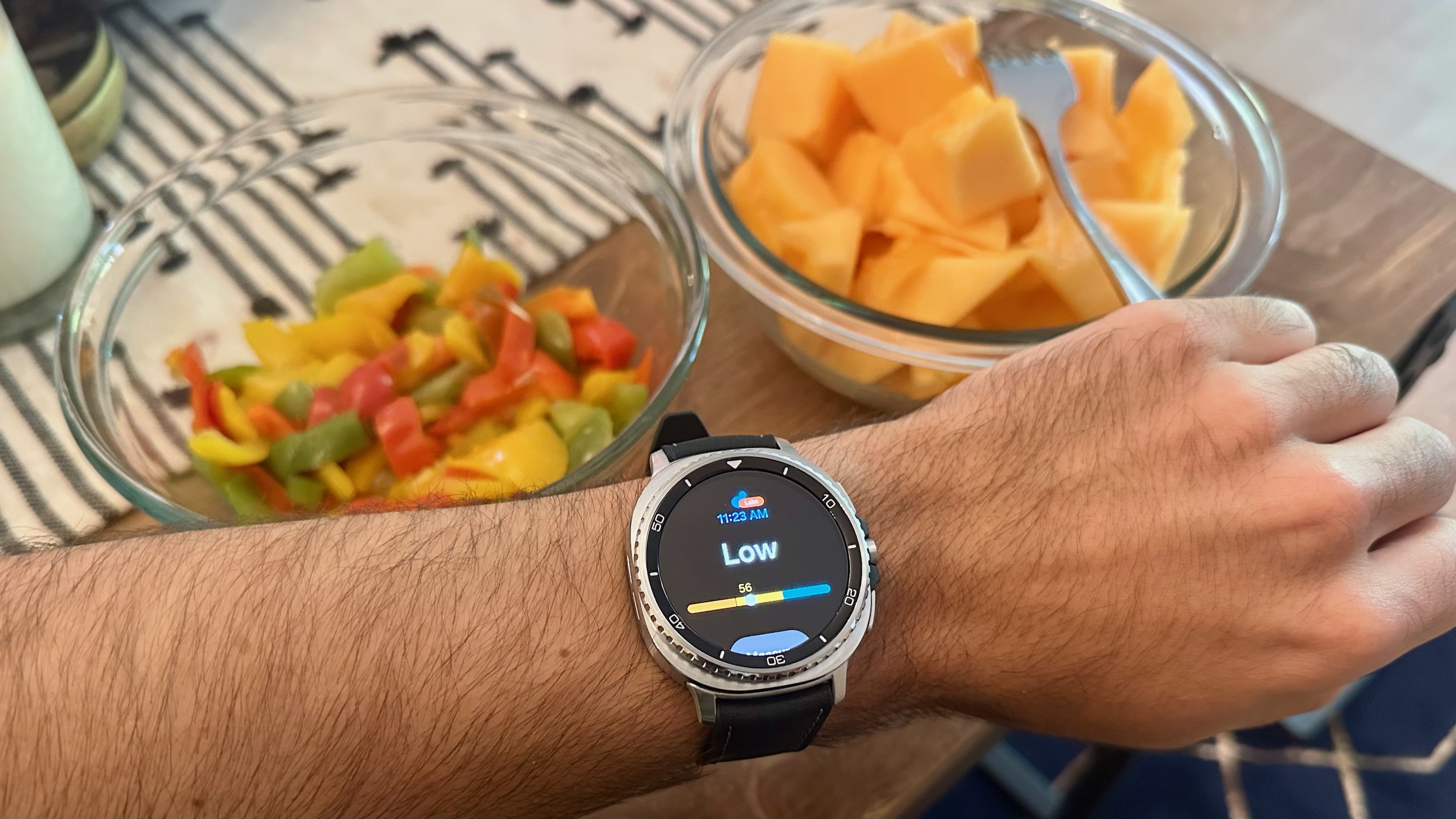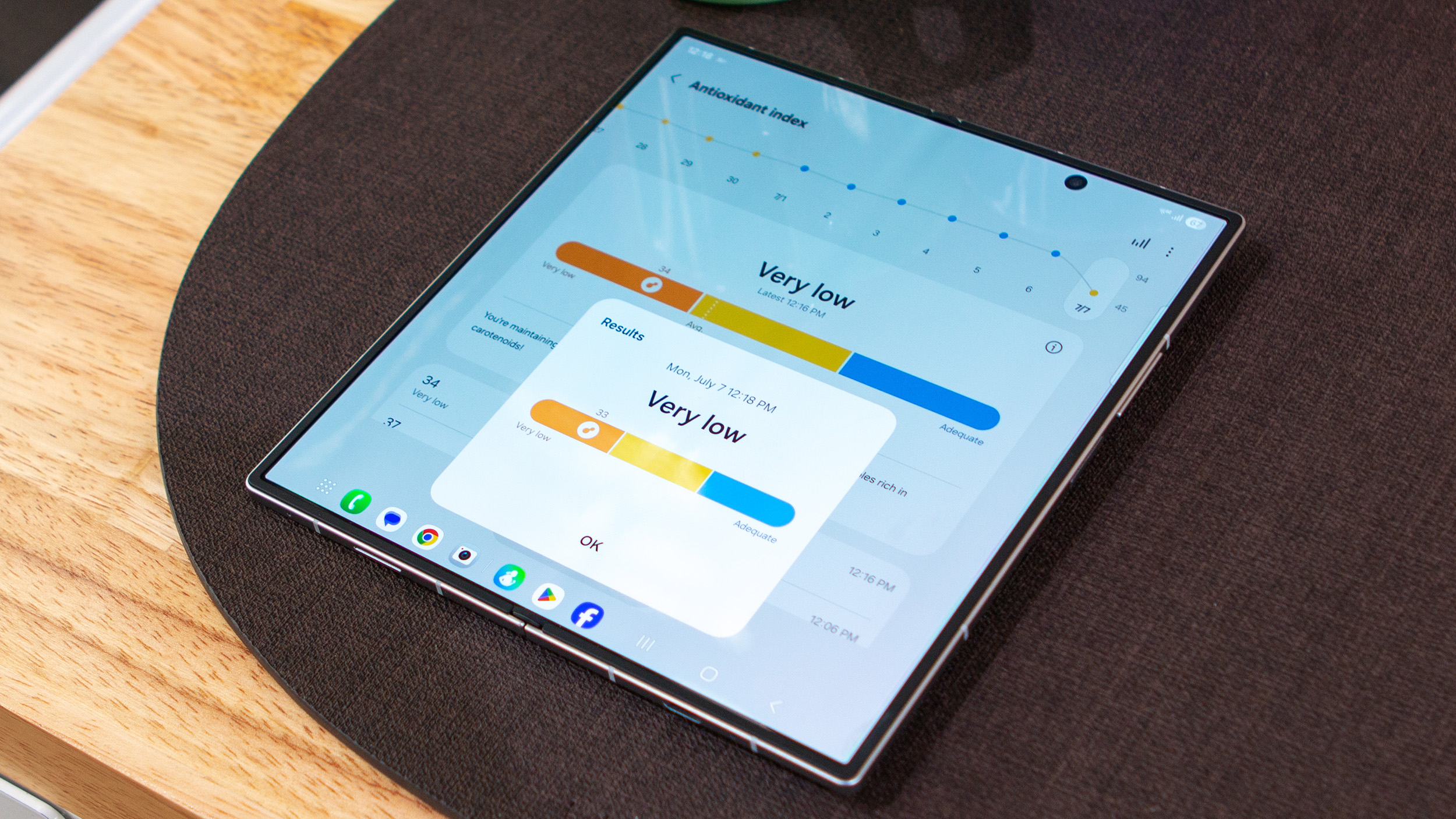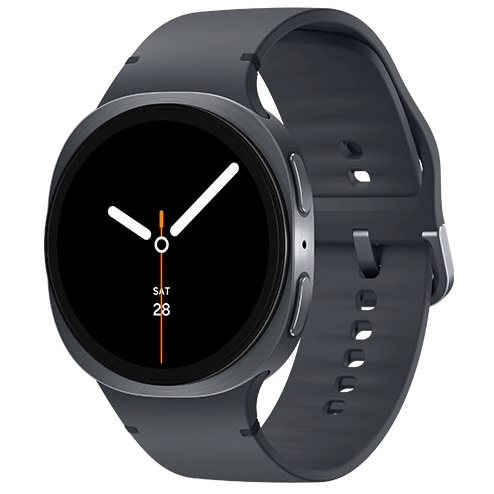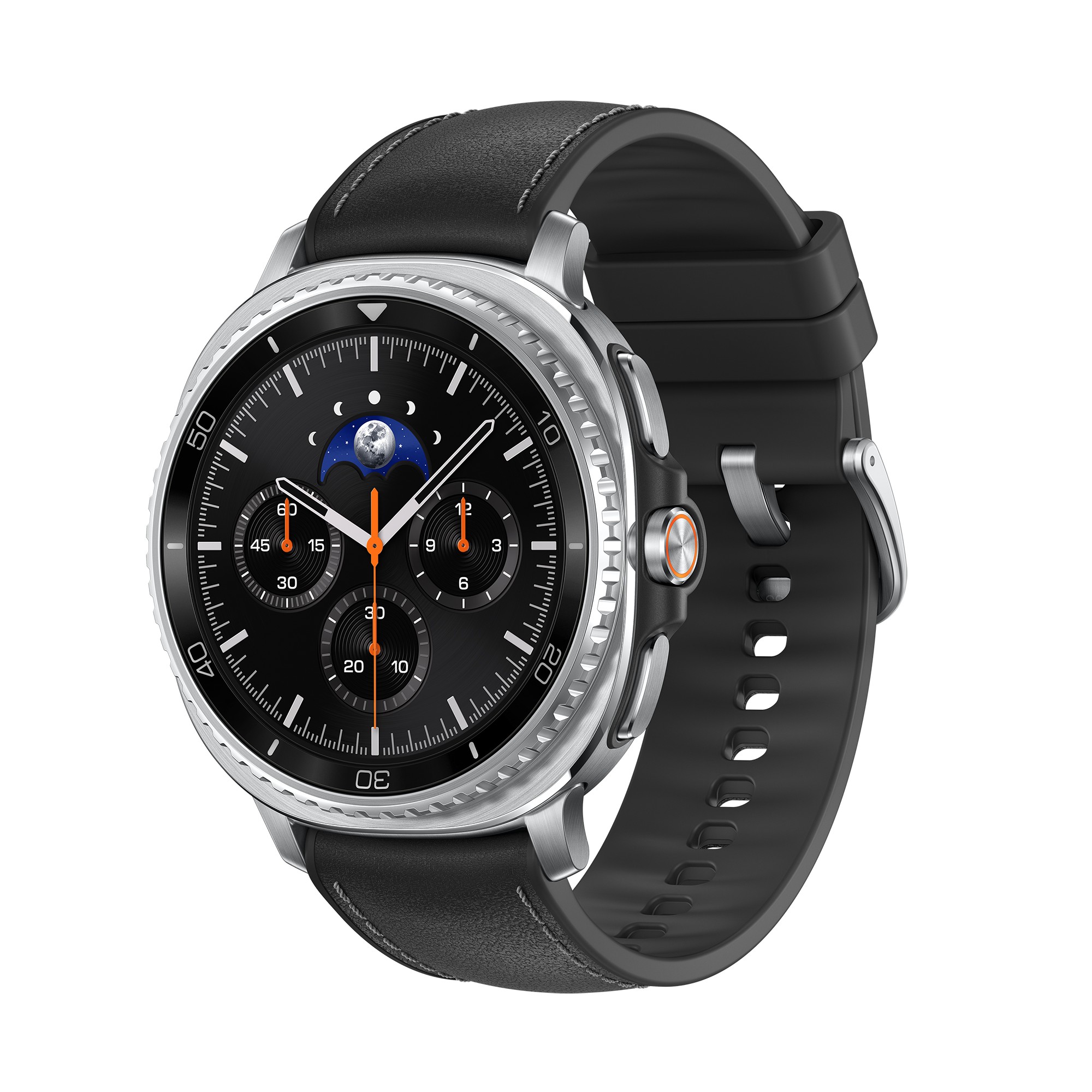I like Samsung’s antioxidant index on the Galaxy Watch 8 more than I expected

One of the few Galaxy Watch 8 exclusives is its antioxidant index, which measures nutrients through your skin to determine whether you’re eating healthily. I took it personally when Samsung estimated that I had “Low” antioxidants, so I spent the past week eating as healthily as possible to see if it made a difference.
Samsung’s multicolored health sensors look for carotenoids, the pigment that gives fruits and veggies their bright red, orange, or yellow coloring; once in your body, they counterbalance the “oxidative stress” generated from poor lifestyle habits like smoking, drinking, overeating, and stress. Hence the name “antioxidants.”
Generally speaking, the antioxidant index is intended to determine whether you’re consuming your WHO-recommended 400g of fruits and vegetables per day. For health-conscious individuals who dislike logging their food daily, the Galaxy Watch 8 offers valuable context.
But since I thought I was eating healthily enough, I decided to cram carotenoid-rich foods into my diet for a week to see whether Samsung would be able to detect the changes properly.
How the Antioxidant Index score works on the Galaxy Watch 8
Your body stores carotenoids in the skin, where the Galaxy Watch 8’s optical sensors can spot and measure them. Samsung told TechRadar that your wrist has too many capillaries, so your blood confuses the results; pressing your thumb against the sensor will “push away all the blood” and make it easier to check your carotenoid levels.
Carotenoids are just one type of antioxidant, but their pigmentation allows Samsung to detect them. We’ve emailed Samsung to ask if it might eventually track other antioxidants, but for now, carotenoids are the best estimate to check non-invasively if your body has other healthy vitamins and nutrients.
So, what foods have carotenoids? Samsung suggests root vegetables (carrots, sweet potatoes), leafy greens (spinach, kale), citrus fruits (oranges, mangoes), tomatoes, and bell peppers. Other carotenoid-rich foods include pumpkin, squash, cantaloupe, and corn; most red, orange, and yellow produce will likely have some.

Samsung used data from clinical trials at Samsung Seoul Hospital to determine the “correlation between fruit and vegetable intake and the accumulation of carotenoids in the skin.” Adequate antioxidant levels get a score of 75–100. People with “Low” scores (50–75) consume 50–99% of the recommended daily amount, so about a 2% increase per point. Very Low (0–49) is “less than 50%.”
Samsung also warns that your score may fall during “periods of severe stress or when drinking or smoking,” so it’s about lifestyle as much as nutrition.
The company says it may change the criteria with “future clinical results,” but the gist is that you want a score of 75 to match recommended levels. Everything above that is just gravy, while lower scores leave you vulnerable to “cell damage, excessive aging, inflammation, worsening eyesight, and chronic diseases such as cancer” over time.
Raising my Antioxidant Index score on my Galaxy Watch 8

Samsung warns that it can take “up to 2 weeks for your antioxidant index to reflect an increased intake of fruits and vegetables,” so I knew that eating a boatload of carotenoids wouldn’t instantly level me up. But I wanted to see if there was an obvious impact from a changed diet in the short term.
I stuck to my normal diet for the first day, and my reading stayed consistent. Starting on Monday, I raided my grocery store for carotenoid-rich fruits and veggies, then spent the next five days eating salads, bell peppers, cantaloupe, and other healthy produce, well above the recommended five servings per day.
My score did start to course-correct, but slowly. I looked into the benefits of raw vs. cooked veggies and realized that raw vegetables are high in vitamins and fiber but low in beta-carotenes. You get the most carotenoids from cooked vegetables paired with healthy fats, like cooking oil.
I’m more of a raw veggies guy than a stir-fry guy, which may be part of my problem. So I tried to incorporate more cooked veggies, paired with meats or peanut butter, during the final stretch.
| Sunday | Monday | Tuesday | Wednesday | Thursday | Friday | Saturday |
| 54 | 53 | 56 | 65 | 61 | 65 | 65 |
I climbed from an antioxidant index score of 53 (56% of recommended antioxidants) to 65 (80%) in a week. In theory, one more week of healthy eating will bring me to my target score of 75, on pace with Samsung’s two-week estimate.
I can’t quantify how accurate Samsung’s antioxidant index is without a blood test, but this experience did, at least, show that this sensor isn’t just some pseudoscientific guesstimate. It can tell that I’m eating healthier.
On the other hand, it feels demoralizing that my antioxidant index score has stalled out in the last few days, despite eating so healthily.
I could have cheated and taken dietary supplements to raise my score, but Samsung warns that these can have “harmful side effects” and “increase your risk for cancer and heart disease,” so you and I should stick to the healthy-eating path.
The main problem with Samsung’s antioxidant index

Most Android watches have food logging in their apps, but I dislike calorie-counting and having to quantify every meal. I do care about eating healthy, however, and only the Galaxy Watch 8 and Galaxy Watch Ultra have a tool like this, thanks to the BioActive sensor. I’m glad to have this tool as a baseline for my health.
Here’s the main issue with the antioxidant index: there are more antioxidants than just carotenoids. Other types, such as flavonoids, polyphenols, and lycopene, are found in a wide range of fruits, vegetables, beans, and teas, and they all help remove the “free radical” molecules that contribute to aging and disease.
Carotenoids are a key indicator of your health, one that helped me recognize a dietary deficiency. However, since Samsung cannot track other non-pigmented antioxidants as easily, your actual “antioxidant score” might be higher than Samsung can accurately assess with a smartwatch.
But this isn’t a criticism! It’s merely a reminder that you shouldn’t ignore the healthy foods that don’t have carotenoids just because Samsung doesn’t reward you for eating them.

Samsung Galaxy Watch 8
The Samsung Galaxy Watch 8 uses its BioActive sensor to track several new metrics, including your circadian rhythm for Bedtime Guidance, Vascular Load for heart health and stress, and the aforementioned antioxidant index. It’s a fast smartwatch with valuable health and fitness insights.

Samsung Galaxy Watch 8 Classic
The Samsung Galaxy Watch 8 Classic has the same BioActive sensors as the Watch 8, but with a stainless steel case, rotating bezel for exact controls, doubled storage, and a third Quick Button for shortcuts. Choose this option if you care about eating healthy and looking more stylish.
Source link







